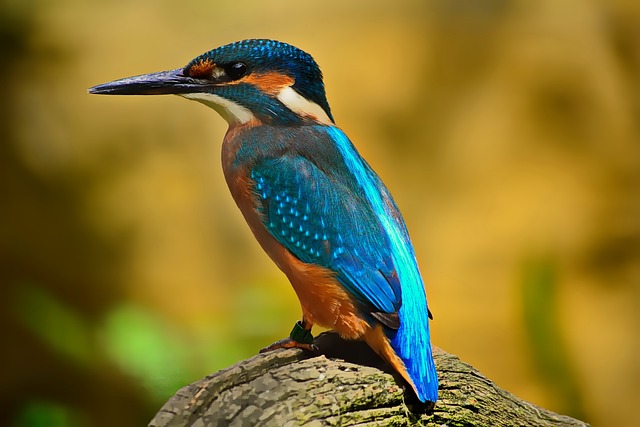
Contents
Introduction to the Handcock Bird
Greetings, nature lovers and birdwatchers! Today, we embarked on an exciting expedition to learn about the enigmatic and alluring handcock bird. Get ready to be enthralled by this endangered species’ distinct traits and behaviour and the initiatives to guarantee its survival in the wild. Come along as we explore the fascinating world of the Handcock, a real treasure from nature.
Physical Characteristics and Habitat
The Handcock bird, sometimes called the elusive “Jewel of the Forest,” is a rare and fascinating species whose striking characteristics and colourful plumage enthral birdwatchers. With feathers that shimmer in shades of sapphire blue, ruby red, and emerald green, this magnificent bird is a pleasure to behold in its native habitat.
Usually located deep within dense tropical rainforests, these birds make their nests in the canopy. Their habitat consists of thick foliage, lofty trees, and plentiful fruit-bearing plants that supply them with food and shelter. The Handcock Bird’s distinct physical features let it disappear into its surroundings, making it difficult for even the sharpest-eyed onlookers to identify.
Despite their amazing appearance and incredible environmental adaptation, habitat erosion, illicit wildlife trading, and deforestation pose serious dangers to handcock birds. Conservation initiatives are essential to preserve these amazing animals and guarantee their survival for future generations.
Behaviour and Social Structure
The handcock bird is known for its fascinating behaviours and complex social structure. These intelligent birds have complex group communication patterns and frequently create dominance hierarchies through entertaining actions like intricate courtship displays and vocalizations.
Handcock birds have a close-knit social structure in which members collaborate to construct nests, defend their territory, and look after the young. Each member plays a specific position based on age, gender, and experience. The older birds often take on leadership positions, while the younger ones learn from observing and engaging in group activities.
Cooperation, grooming sessions, and shared tasks during food collection and predator defence define their behaviour toward one another. These exchanges reinforce the group’s ties and guarantee survival in the wild.
Knowledge about the subtleties of handcock behaviour will help us better understand how these unusual birds intelligently and cooperatively navigate their surroundings.
Threats to the Species
Despite its resilience, the handcock bird’s existence in the wild is threatened by several threats. Urbanization and deforestation have resulted in habitat loss, a major problem for this species. As their natural habitats diminish, handcock birds require assistance locating appropriate locations for foraging and nesting.
The handcock bird population is also seriously threatened by illegal trapping and poaching. Due to their capture for financial gain or domestication as pets, exotic birds are becoming less common due to the demand for them by the illicit wildlife trade. This exploitation further disrupts the delicate balance within their ecosystems.
Another urgent issue facing handcock birds globally is climate change. Extreme weather and temperature changes might affect their food sources and breeding cycles, lowering their chances of successful reproduction. It’s hard for this rare species to adjust to these fast environmental changes.
Conservation Efforts and Success Stories
Conservation efforts for the Handcock bird have been vital in keeping this endangered species from extinction. Numerous groups and environmentalists have devoted their time and resources to protecting the habitat of these amazing animals.
Handcock Bird conservation success stories motivate continued work. Thanks to cooperative efforts, considerable progress has been made in raising public awareness of the value of protecting this rare bird species.
Creating protected areas to preserve the Handcock Bird’s native habitat is one example of a successful endeavour. These efforts have led to a noticeable increase in population numbers, showcasing the positive impact that conservation work can achieve.
People and communities help ensure the Handcock Bird’s future by implementing sustainable practices and supporting environmental conservation. The commitment to conserving this gorgeous species indicates a societal duty to preserve biodiversity.
Tips for Spotting a Handcock Bird in the Wild
Here are some pointers to aid in your quest to see the elusive handcock bird in its natural setting. First and foremost, investigate where this uncommon species is known to live; they usually prefer dense forests with lots of vegetation for feeding and nesting.
Patience is key to spotting these birds. They are notoriously shy and tend to blend into their surroundings with their green and brown plumage. Keep a keen eye out for any movement or rustling in the vegetation, which could suggest their arrival.
The best times to go birdwatching are in the early morning or late afternoon when Handcock birds are most active. Be sure to creep and avoid sudden movements that may startle them away.
Consider investing in a pair of binoculars or a zoom lens for your camera to get a closer look at these magnificent creatures without disturbing them from afar. Above all, they ought to honour their personal space and watch from a safe distance to avoid interfering with their natural behaviour.
Conclusion
Despite facing multiple risks to its survival, including habitat loss and poaching, efforts are being made to safeguard and conserve the Handcock Bird population. Committed conservation efforts and global success stories restore hope for these rare birds.
Individuals wishing to observe a handcock bird in the wild must have patience and strong observation abilities. Remember to respect their natural habitat and remain a safe distance while enjoying their presence.
The handcock bird’s beauty and cryptic ways enthrall scholars and nature lovers. It is an intriguing bird. Continue to be alert and curious, and never stop taking in the wonders of the variety of species on our globe.
FAQs
Q: Are Handcock Birds endangered?
A: Because of habitat loss and hunting, handcock birds are considered vulnerable species.
Q: How can I help protect Handcock Birds?
A: Donating to groups that safeguard their habitats and spread awareness about the need to preserve this rare species is one way you can help with conservation efforts.
Q: Can I keep a Handcock Bird as a pet?
A: Keeping wild birds as pets is unethical and against the law.






